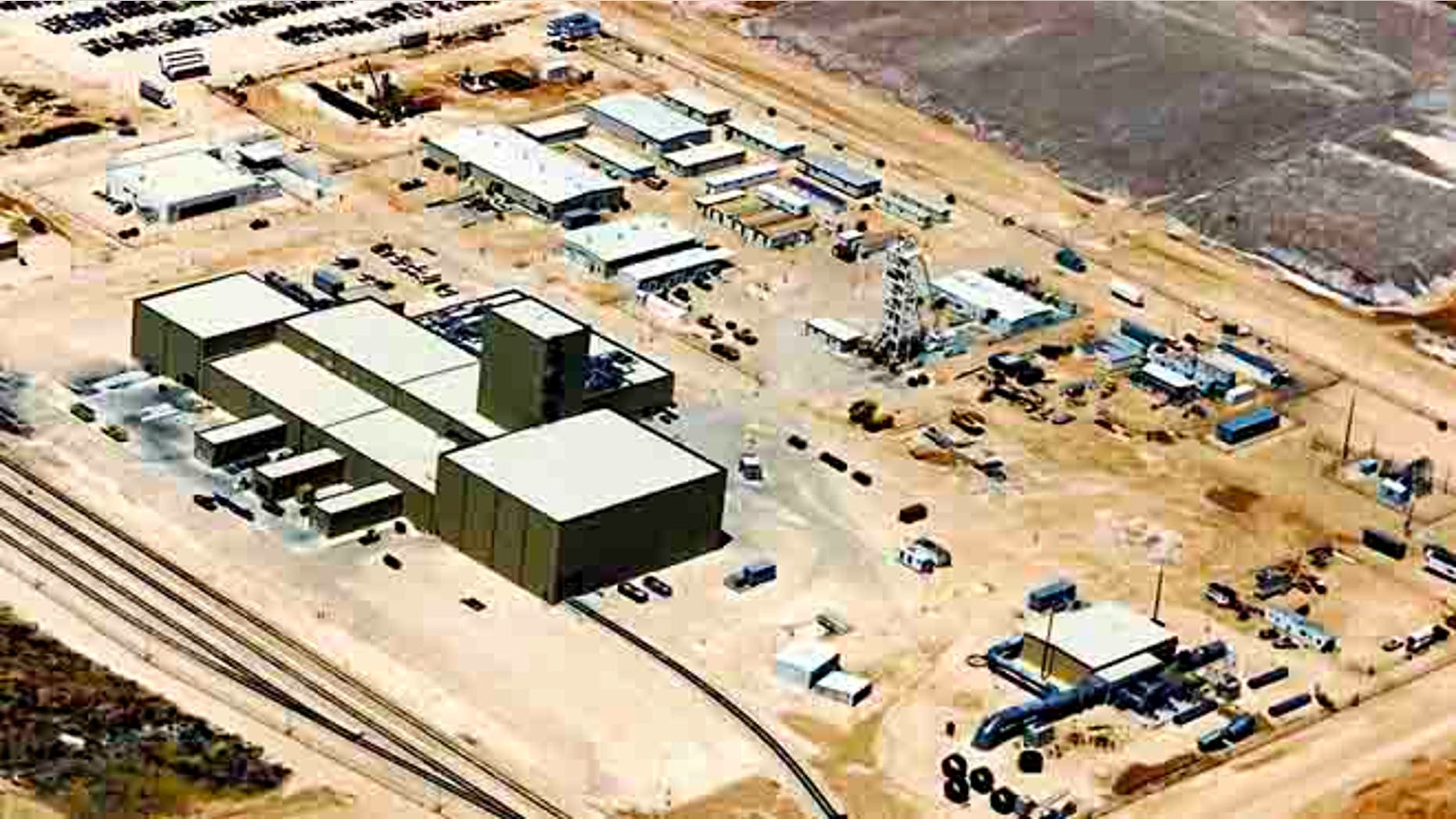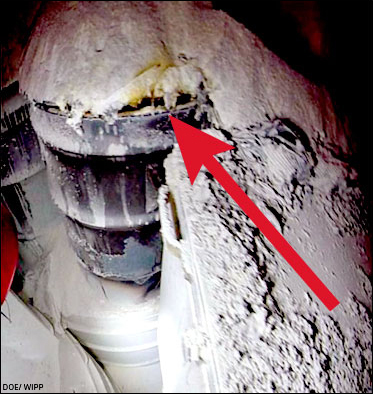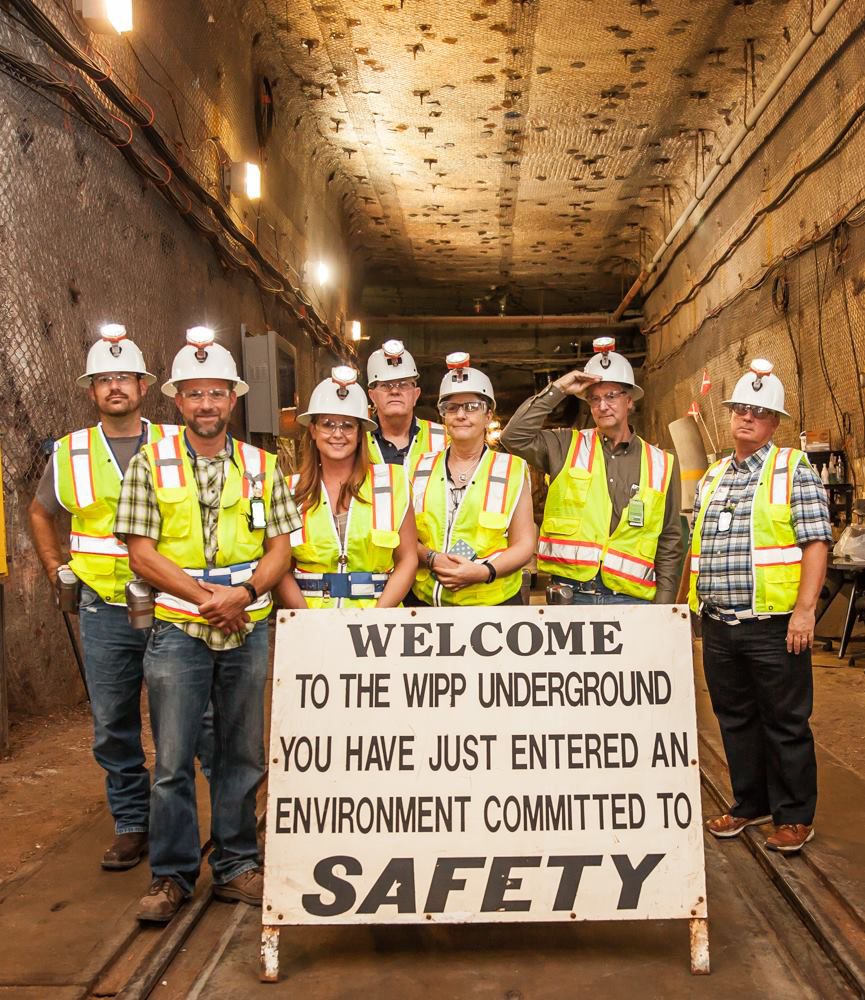
The Waste Isolation Pilot Plant began storing of nuclear waste on in 1999. Officials recently gathered to mark the anniversary.
WIPP Marks 25 Years of
Operation in Southeast New Mexico
Adrian Hedden / Las Cruces Sun
(March 28, 2024) — A shipment of nuclear waste arrived in southeast New Mexico on March 26, 1999. It was the first time the Waste Isolation Pilot Plant, U.S.’ only repository for nuclear waste, was operational after more than two decades of designing and planning work for the facility. WIPP continued to accept shipments of transuranic (TRU) nuclear waste for 25 years since that first shipment, amid a series of controversies for the unique facility and an incident in 2014 that led to a three-year shutdown of the site.
WIPP is owned by the U.S. Department of Energy’s Office of Environmental Management (EM) and managed by the DOE’s Carlsbad Field Office and Bechtel subsidiary Salado Isolation Mining Contractors (SIMCO).
The waste, made up of clothing materials, equipment and other irradiated debris, is shipped to WIPP via trucks from federal nuclear facilities and labs across the country. At the time of its start, WIPP was expected by many projections to operate for about 25 years, but the site eclipsed that lifetime on March 26, 2024.
Officials have already revealed plans to keep WIPP open for decades more, projecting its operation out as late as 2083. EM Senior Adviser William “Ike” White said this was because WIPP’s term of operation was really defined by its allowable physical capacity under the federal Land Withdrawal Act (LWA).
Officials estimated the waste at WIPP makes up about 40 percent of the LWA limit of 6.2 million cubic feet of waste. The federal government likely won’t start disposing of TRU waste a different site, White said, until WIPP hits that capacity under federal law. His comments came during an event held at the WIPP site on the day of its 25th anniversary of accepting shipments, where federal, state and local officials and business leaders met at the facility for a series of speeches.
“The statute that set up WIPP, the limit is in the Land Withdrawal Act,” White said during an interview with the Carlsbad Current-Argus. “That’s at least a few decades away. The (original) projections were from decades ago. It’s taken longer than people assumed.”

Sparking drum allowed the release of radioactivy at WIPP site.
Nuclear Waste Incident at WIPP in 2014
One event that contributed to a slow-down of WIPP’s operations compared to its early years occurred in 2014, when a mis-packaged drum of waste already emplaced in the underground ruptured and released radioactive materials into the air. This meant WIPP ceased waste acceptance and disposal operations until 2017 to allow the site to be decontaminated and enact a swath of stricter standards for procedures like how waste drums are evaluated before being accepted by WIPP and how incidents are reported and responded to.
Government records indicated a lower waste shipment rate to WIPP in the years since the 2014 event.
Seven years after WIPP restarted its operations, White said he measured success by the level of safety he said WIPP operated under since the event. He also pointed at ongoing work to upgrade WIPP’s infrastructure ― like the almost half-billion dollar rebuild of its ventilation system expected to go into service by 2026 ― as sign that the site was recovering.
“One of the best ways of measuring success is doing things safely,” White said. “We’ve had a lot of infrastructure improvements.” And those could keep WIPP operational until its statutory limit is fulfilled, but the DOE is also required under its 10-year operation permit issued by the State of New Mexico to begin researching where the U.S. will next put its nuclear waste. White said it took more than 25 years to see WIPP begin operations as it was sited and developed, and he expected the next repository to “take a long time.”
“WIPP is the nation’s waste repository,” White said. “We’re looking at what comes after the Land Withdrawal Act limit. We have to look at our options. That takes a long time.”

A Site for Storing “Legacy Waste”
New Mexico and DOE work to overcome WIPP’s ‘controversies’ Deputy Cabinet Secretary Sydney Lienenmann with the New Mexico Environment Department (NMED) said during her speech that the clause to find WIPP’s successor was one of many provisions agreed upon by the state and federal government last year during negotiations for the permit renewal.
The new permit also notably required the DOE to define and prioritize “legacy waste” such as that leftover at Los Alamos National Laboratory in northern New Mexico from expanded weapons development during the Cold War.
“There’s a lot of strong feelings that go into those kinds of permit negotiations. Sometimes I think we get those preconceived notions in our heads,” Lienenmann said. “All the parties came to a consensus of what that permit should look like.”

An On-going Source of Controversy
This collaboration between the state and federal government on WIPP operations began in 1981 when former-New Mexico Sen. Jeff Bingaman (D-NM), who then served as the state’s attorney general, sued the Department of Energy to place limits on the amount and kinds of waste that can be disposed of at the site.
That lawsuit resulted in a consultation and cooperation (C&C) agreement, dictating terms for the federal government to operate WIPP in New Mexico for the years since. The C&C agreement required the federal government to issue all environmental analysis to the State, fund New Mexico’s own research and exclude the State from liabilities.
“On the issue of public health and safety, the federal system we have provides that each level has a responsibility. It’s no secret that this type of overlapping responsibility will cause conflicts,” Bingaman said. “WIPP is a case where public officials at all levels of government were able to achieve an important and sometimes controversial objective. WIPP has had its share of controversies.”
Adrian Hedden can be reached at achedden@currentargus.com or@AdrianHedden on the social media platform X.
More
Feds lose appeal of vacated license for nuclear waste storage site in Permian Basin
‘State consent’ on nuclear stripped from Senate bill
Nuclear waste site near Carlsbad to double in size, take waste until 2083
Holtec’s New Mexico nuclear waste proposal questioned during federal court hearing
Rene